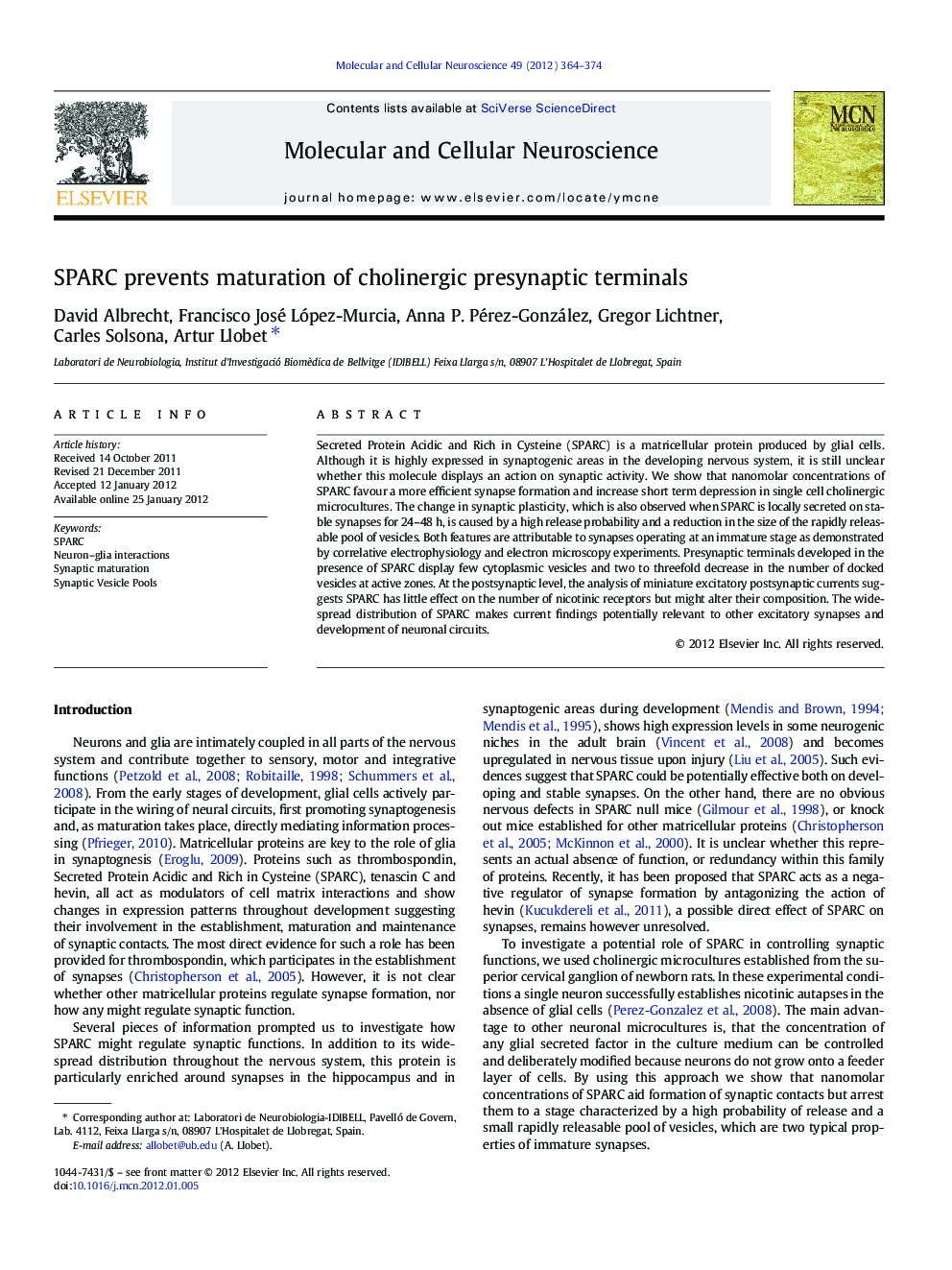| Article ID | Journal | Published Year | Pages | File Type |
|---|---|---|---|---|
| 10956588 | Molecular and Cellular Neuroscience | 2012 | 11 Pages |
Abstract
Secreted Protein Acidic and Rich in Cysteine (SPARC) is a matricellular protein produced by glial cells. Although it is highly expressed in synaptogenic areas in the developing nervous system, it is still unclear whether this molecule displays an action on synaptic activity. We show that nanomolar concentrations of SPARC favour a more efficient synapse formation and increase short term depression in single cell cholinergic microcultures. The change in synaptic plasticity, which is also observed when SPARC is locally secreted on stable synapses for 24-48Â h, is caused by a high release probability and a reduction in the size of the rapidly releasable pool of vesicles. Both features are attributable to synapses operating at an immature stage as demonstrated by correlative electrophysiology and electron microscopy experiments. Presynaptic terminals developed in the presence of SPARC display few cytoplasmic vesicles and two to threefold decrease in the number of docked vesicles at active zones. At the postsynaptic level, the analysis of miniature excitatory postsynaptic currents suggests SPARC has little effect on the number of nicotinic receptors but might alter their composition. The widespread distribution of SPARC makes current findings potentially relevant to other excitatory synapses and development of neuronal circuits.
Related Topics
Life Sciences
Biochemistry, Genetics and Molecular Biology
Cell Biology
Authors
David Albrecht, Francisco José López-Murcia, Anna P. Pérez-González, Gregor Lichtner, Carles Solsona, Artur Llobet,
